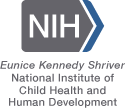USA 2012
This information has been created by the Centre for Time Use Research at University College London
Samples included
| Sample description | |
|---|---|
| Country: | USA 2012 |
| Study title: | American Time Use Survey |
| Collector: | United States Bureau of Labor Statistics, Department of Labor |
| When conducted: | Conducted continuously throughout each year |
| Sampling method and study design: | This study monitors what people across the USA are doing on any given day. The ATUS is a national sample of adults aged 15 or older in private households (not nursing homes or institutions), and is drawn from a stratified three-stage random sub-sample of households that have completed the 8th and final wave of the Current Population Survey (CPS). The diary wave takes place around two months after the final CPS interview. While largely similar to the first year of the ATUS, budget cuts required the reducation in the sample size from 2004. Some minor amendments have been made to the code frame each year. From 2005, the codes assigned to the travel activities were renumbered. From 2011, the survey includes an eldercare module, which both covers separate information of the provision of care to older people and also collects secondary eldercare in addition to secondary child in your care. The diaries were collected from one person per household about the day before the interview (yesterday) using computer assisted telephone interviewing (CATI). Participants were assigned to complete a diary for a particular day of the week. If people were sampled for a Monday and could not complete the diary on the first Monday of attempted contact, then the interviewers tried to call again for information about another Monday. The interviewers tried to contact people for 8 weeks. Half of the diaries were collected on weekend days, and half on weekdays. Respondents were contacted by mail with information about the study before being phoned for the diary interview. Around 5% of CPS households did not have a phone. These households are included. People in households with no phone were sent a $40 debit card, which could be activated with a pin number. Respondents received the pin number if they called the interview team to do the diary interview. Interviews were conducted in English and Spanish. |
| Sample size: | 12,443 time diary data respondents |
| Response rate: | 53.2% |
| Weighting procedures: | The data include weights which adjust for oversampling of some groups, adjust for non-response, and balance the days of the week. The weights also inflate to the size of the national population. |
| Sources of information: | Bureau of Labor Statistics |
| Available documentation: | Questionnaire User guide |





